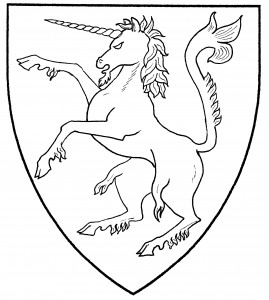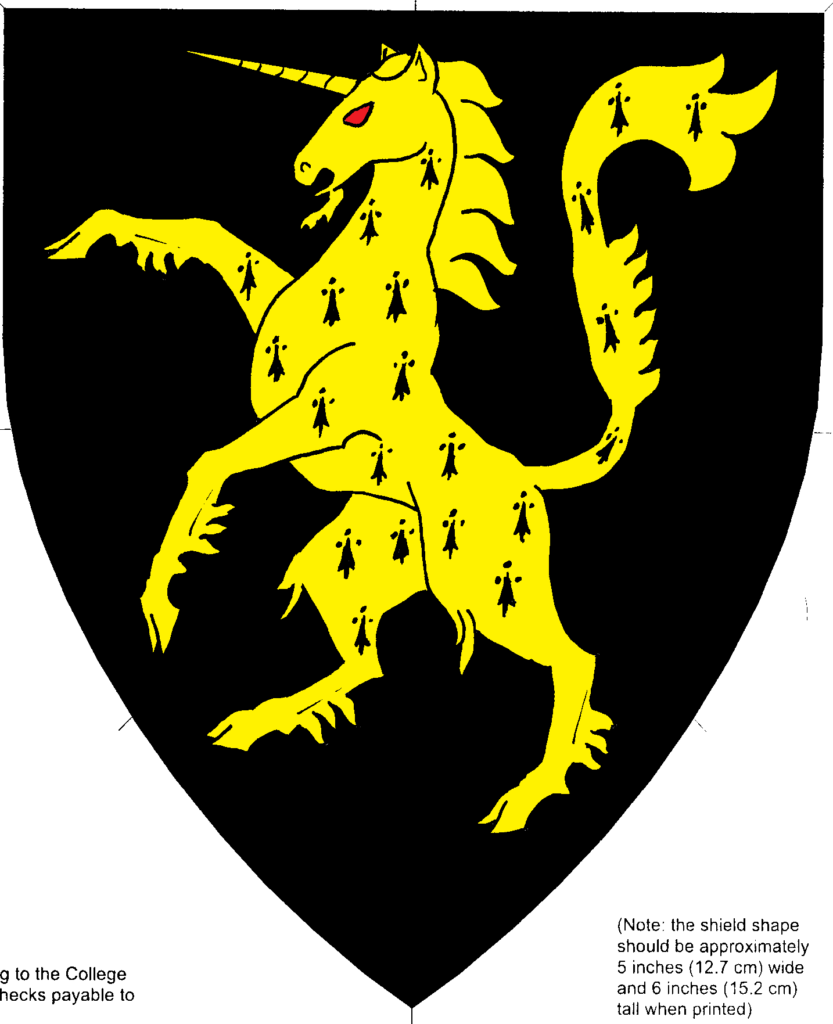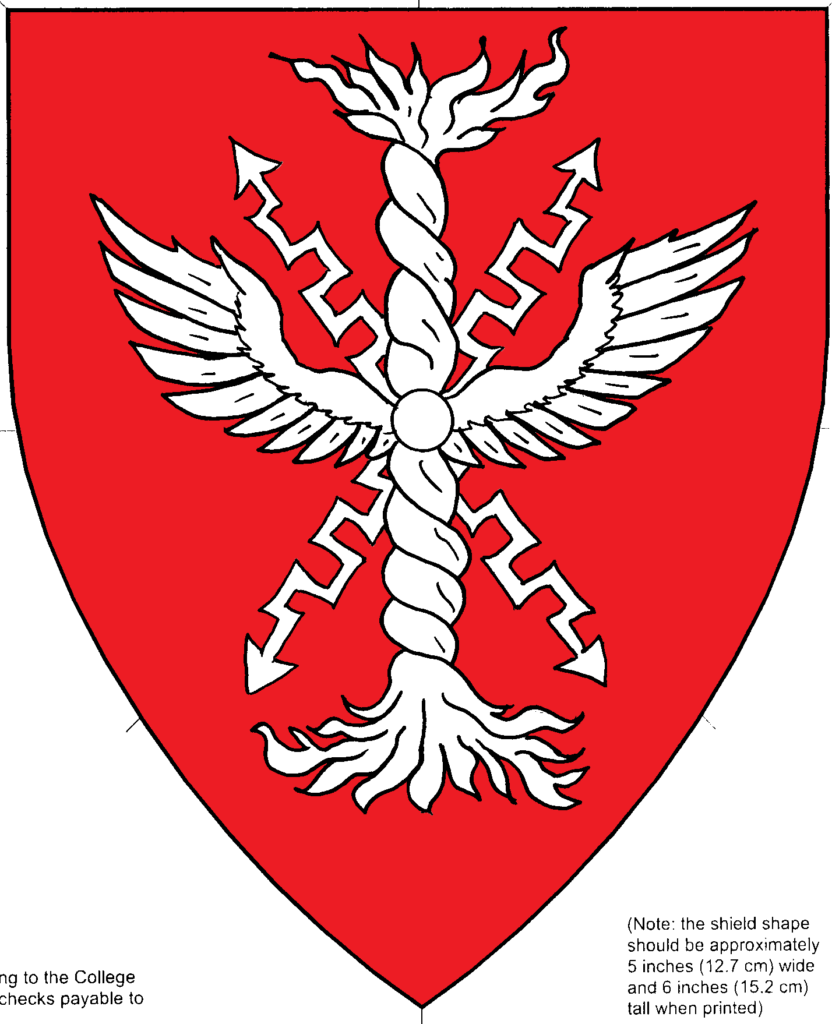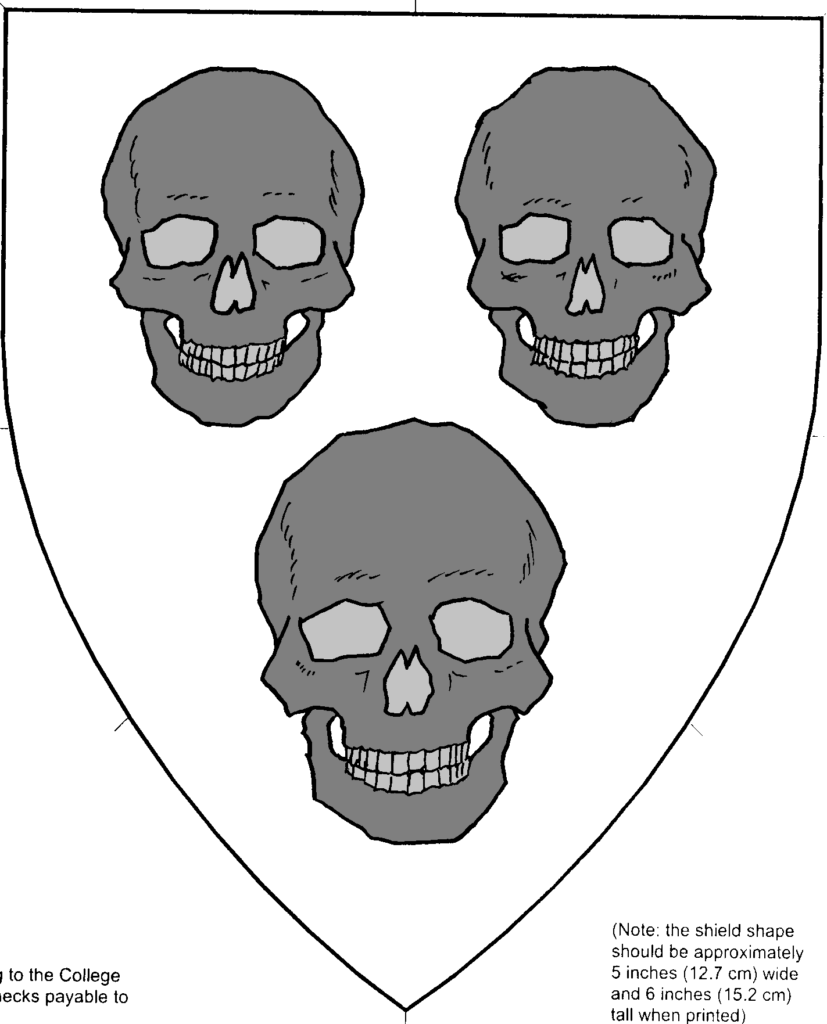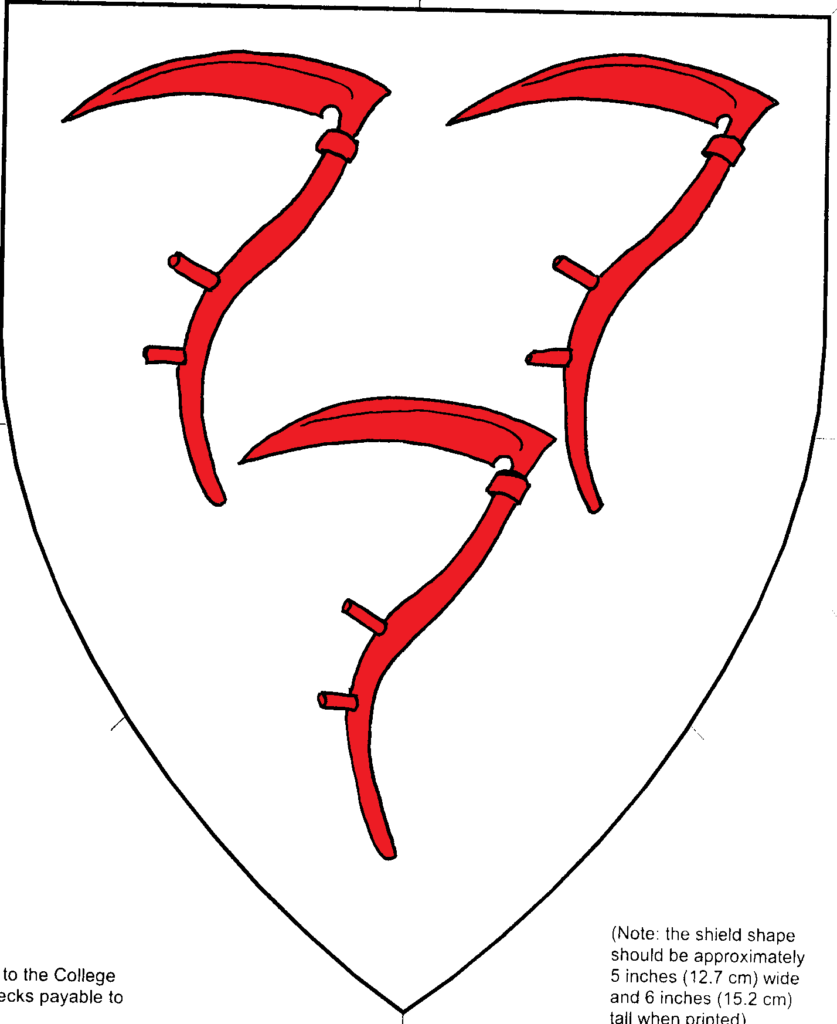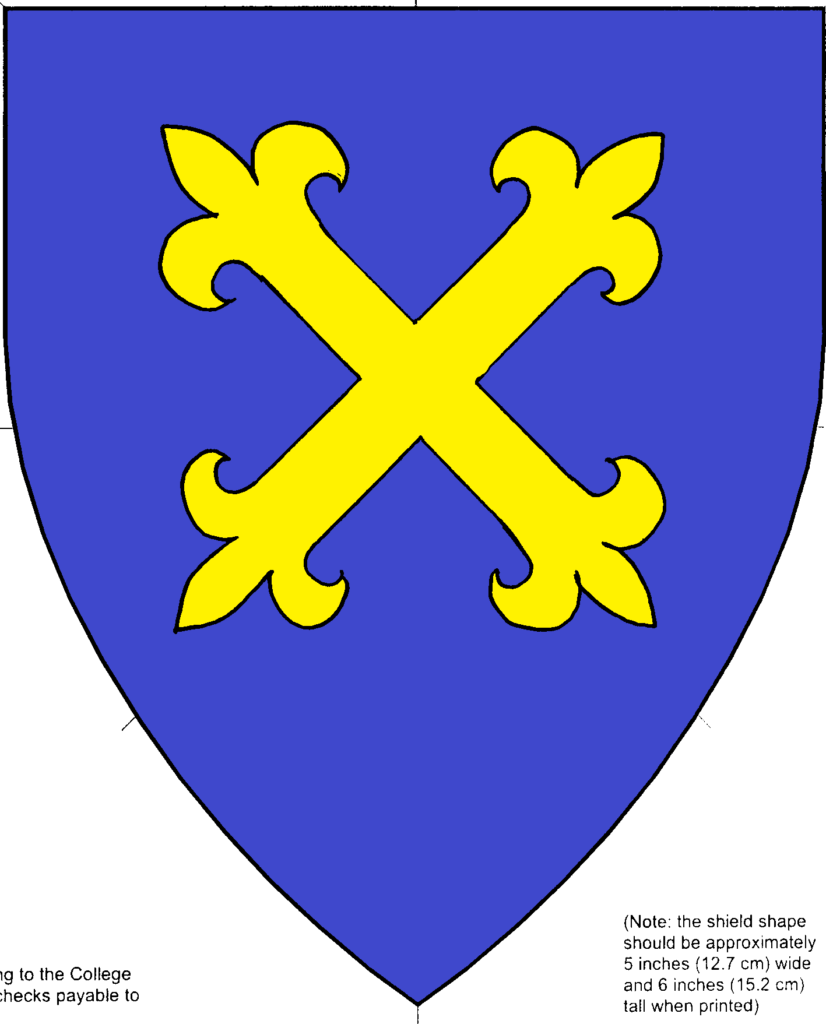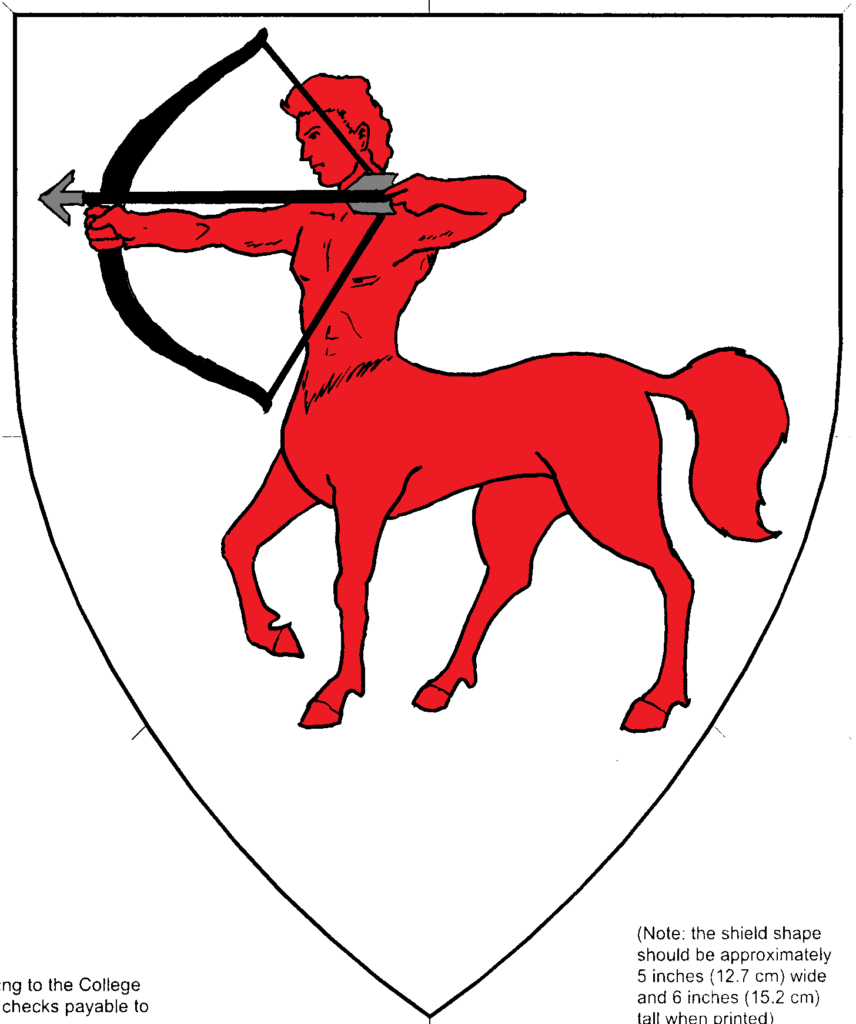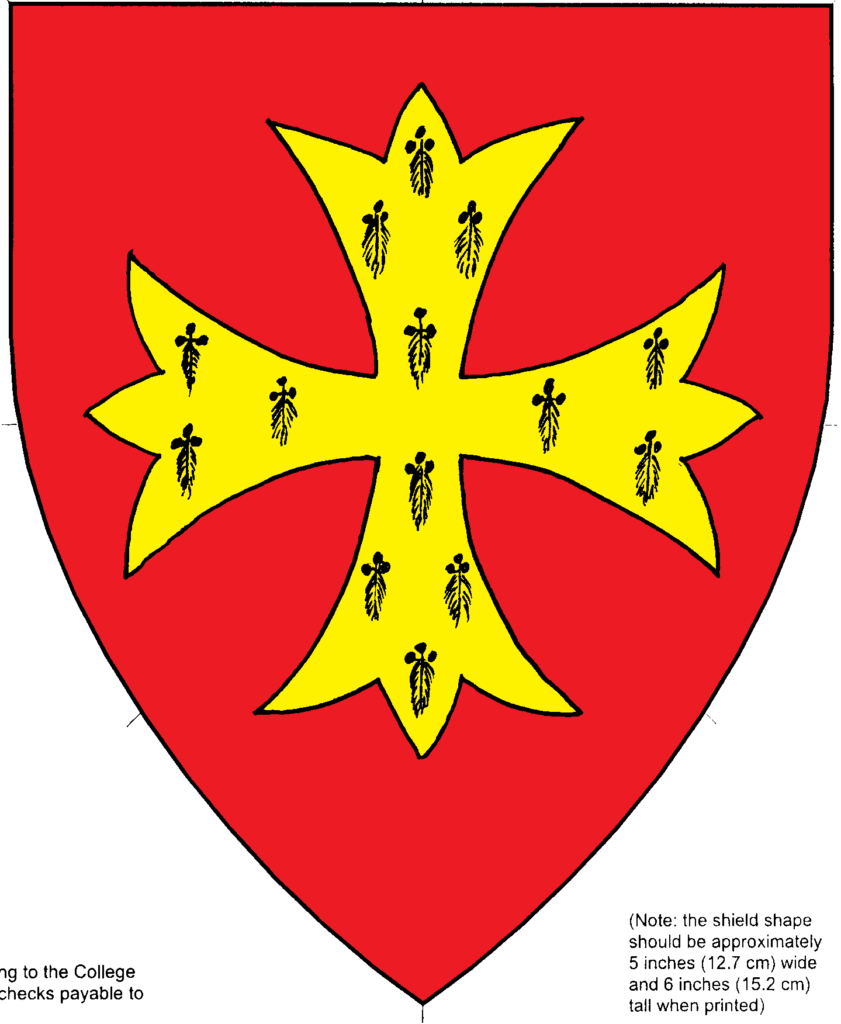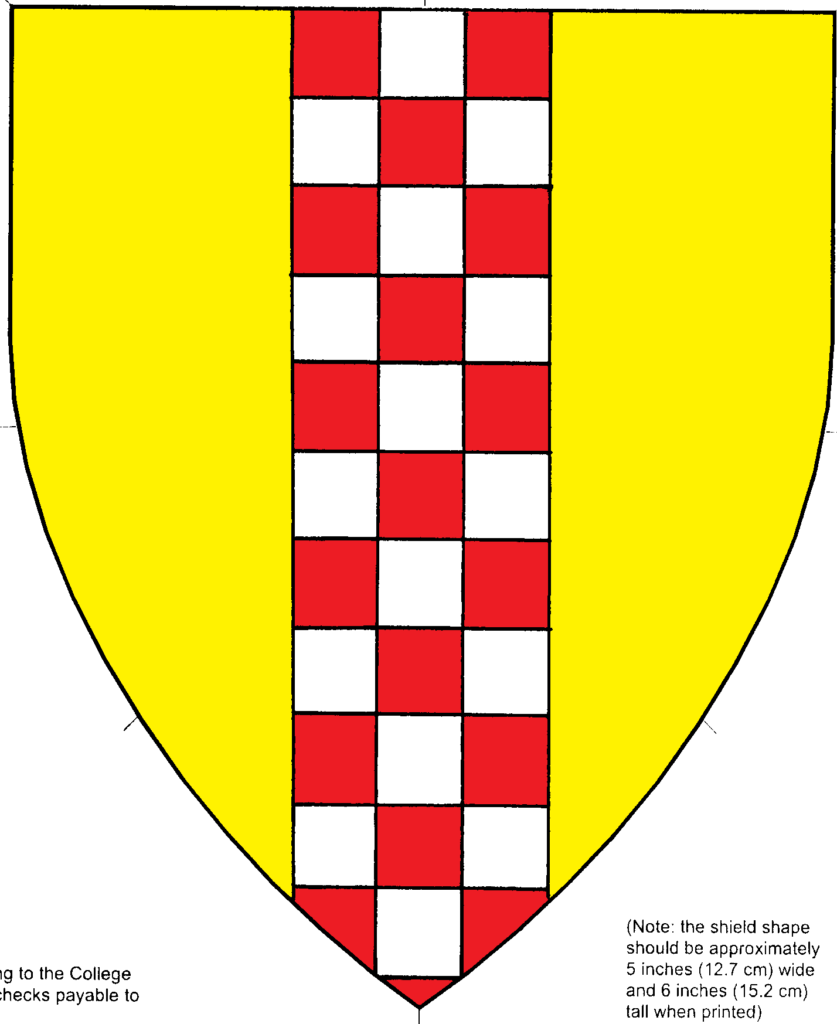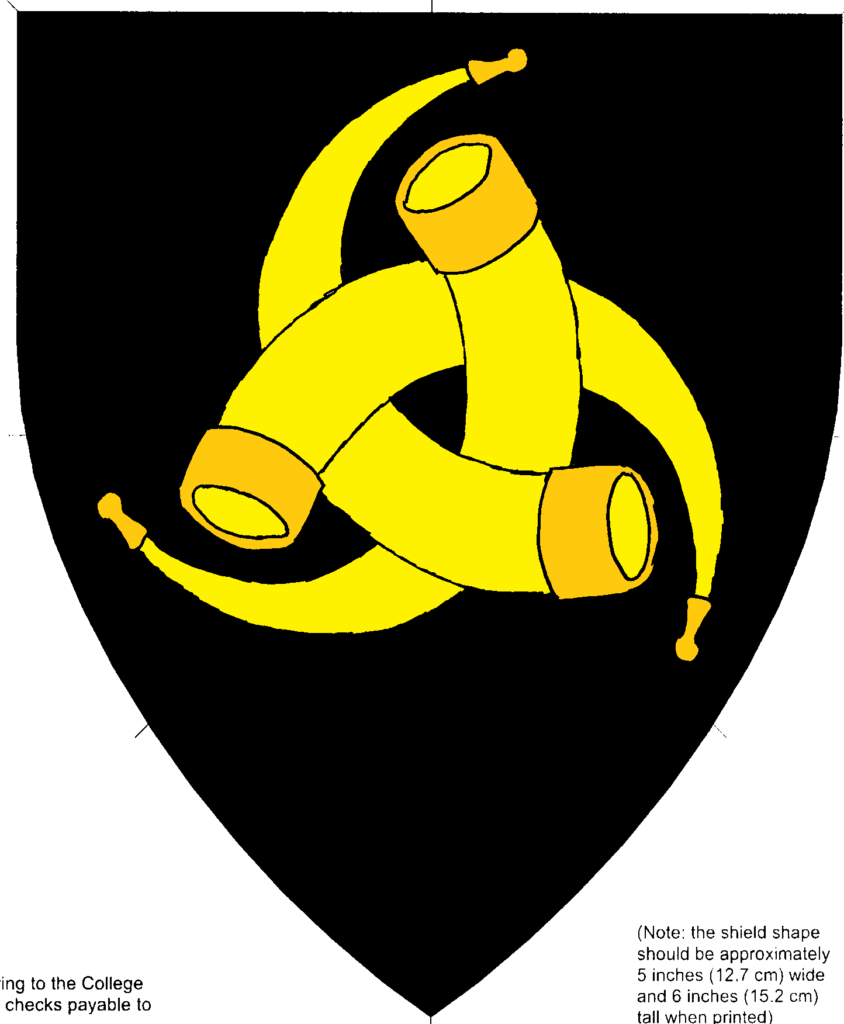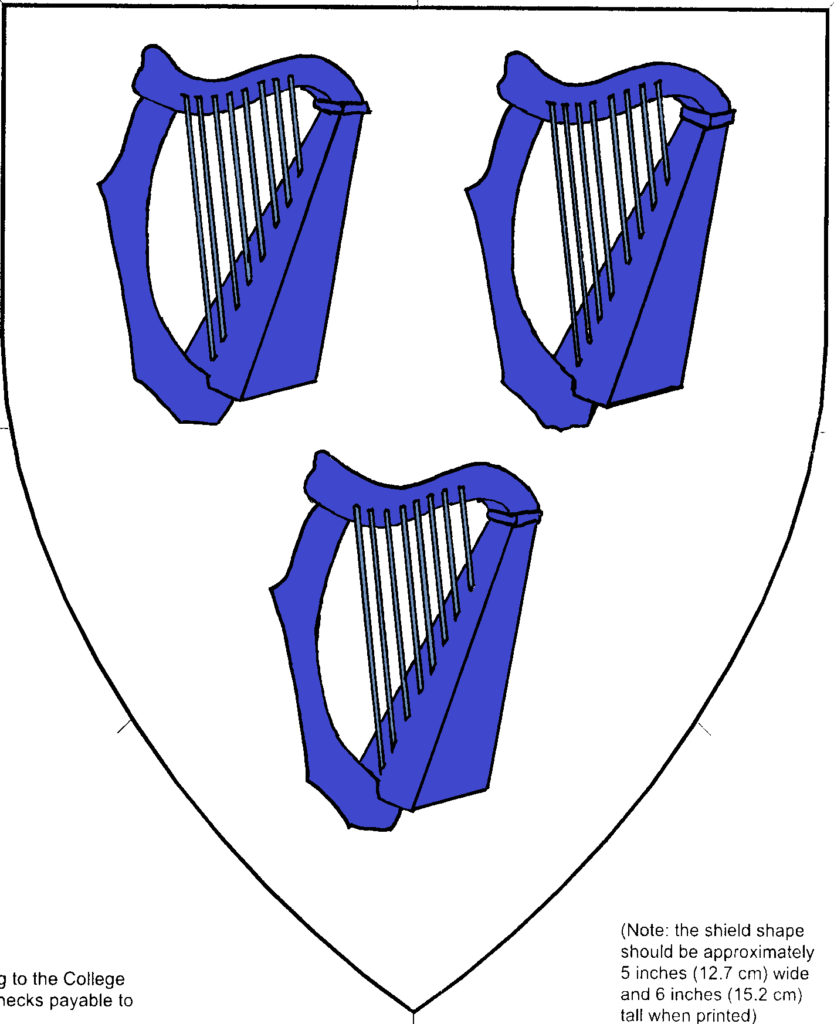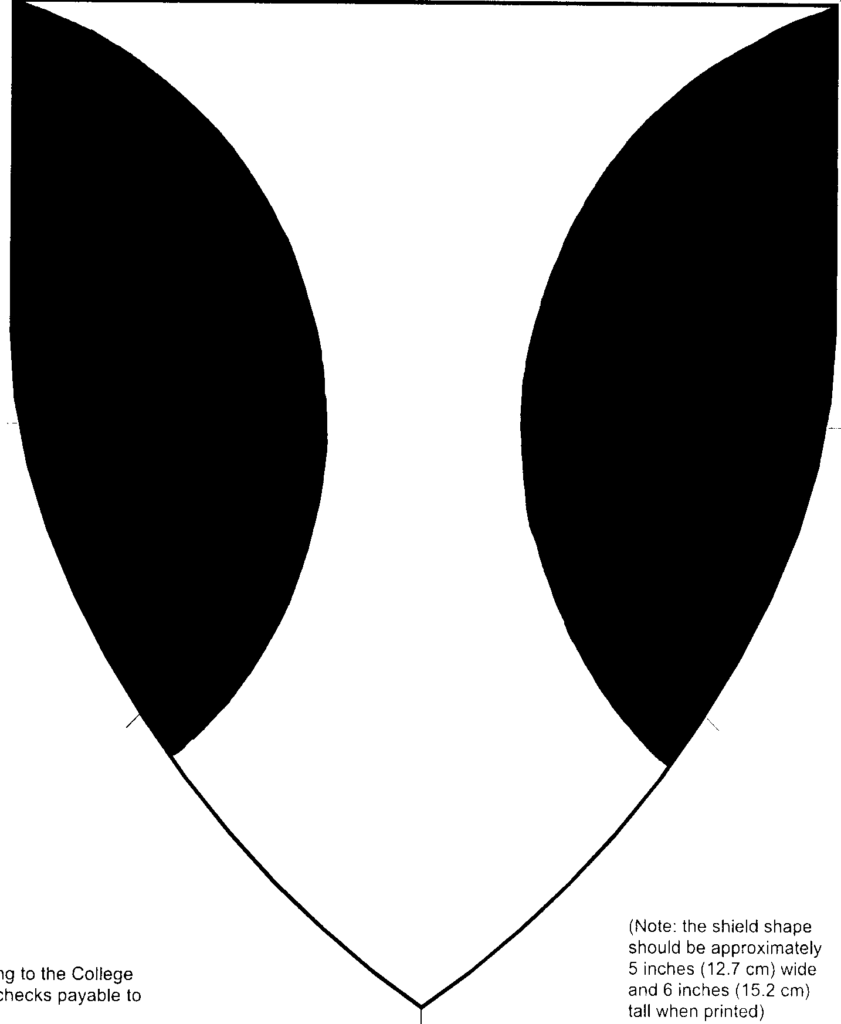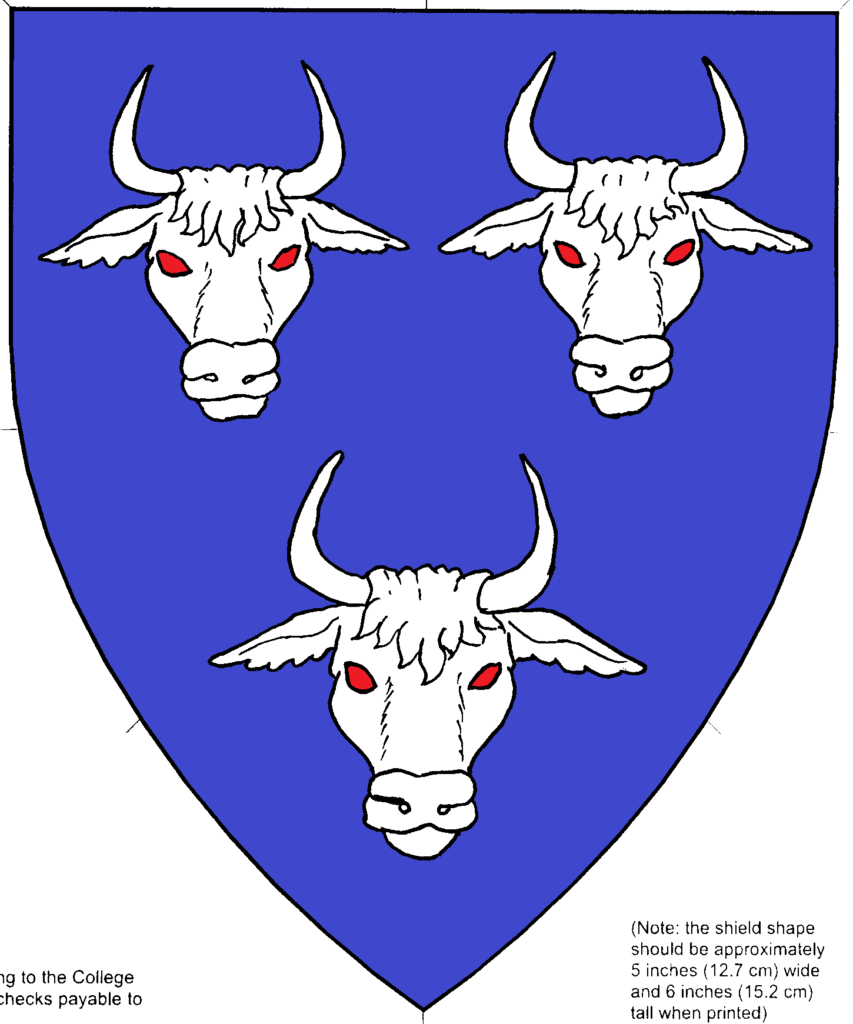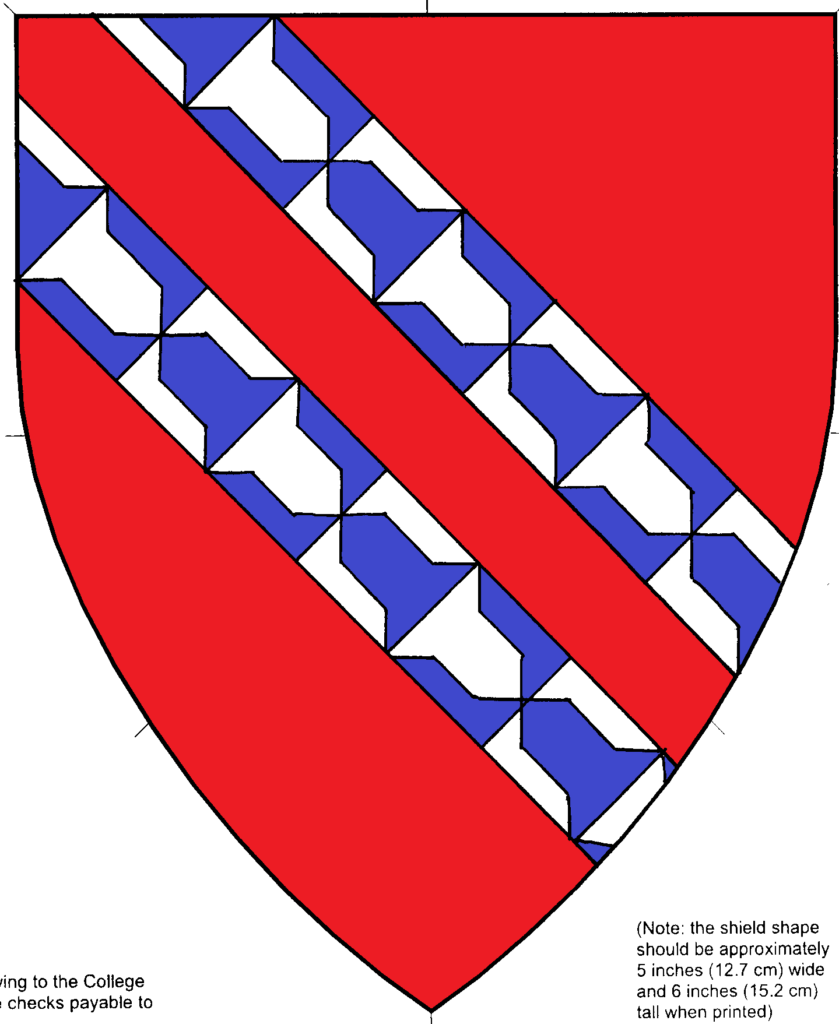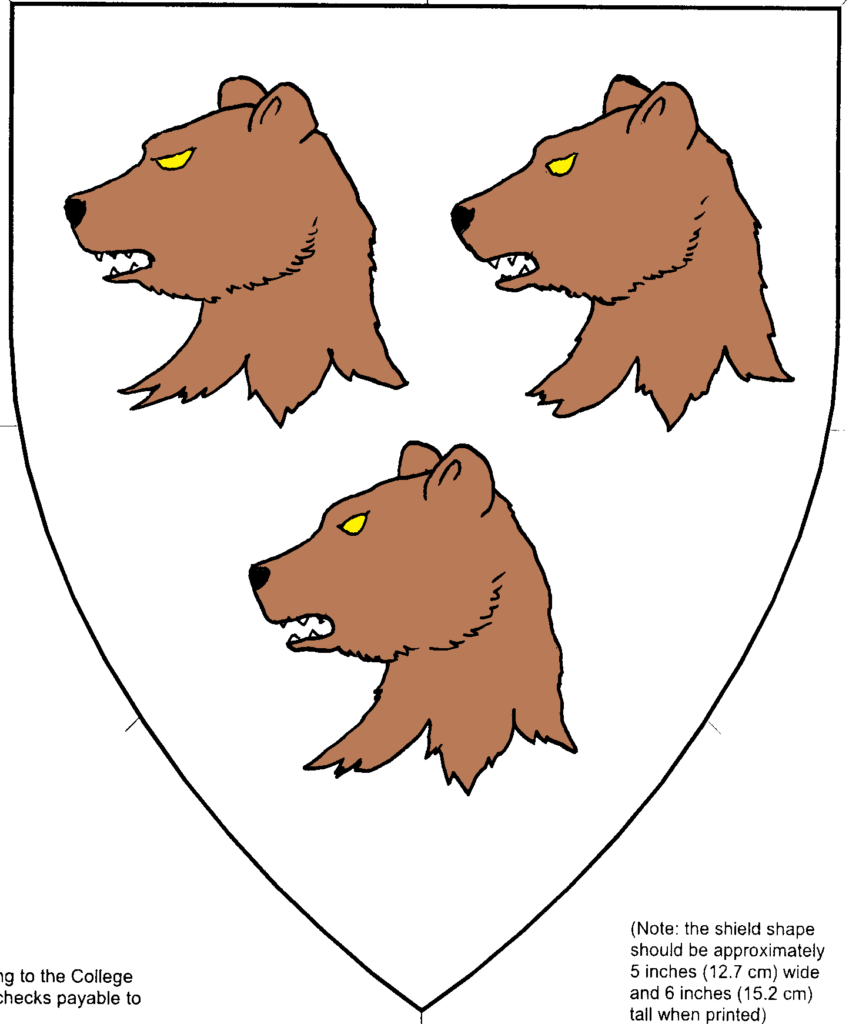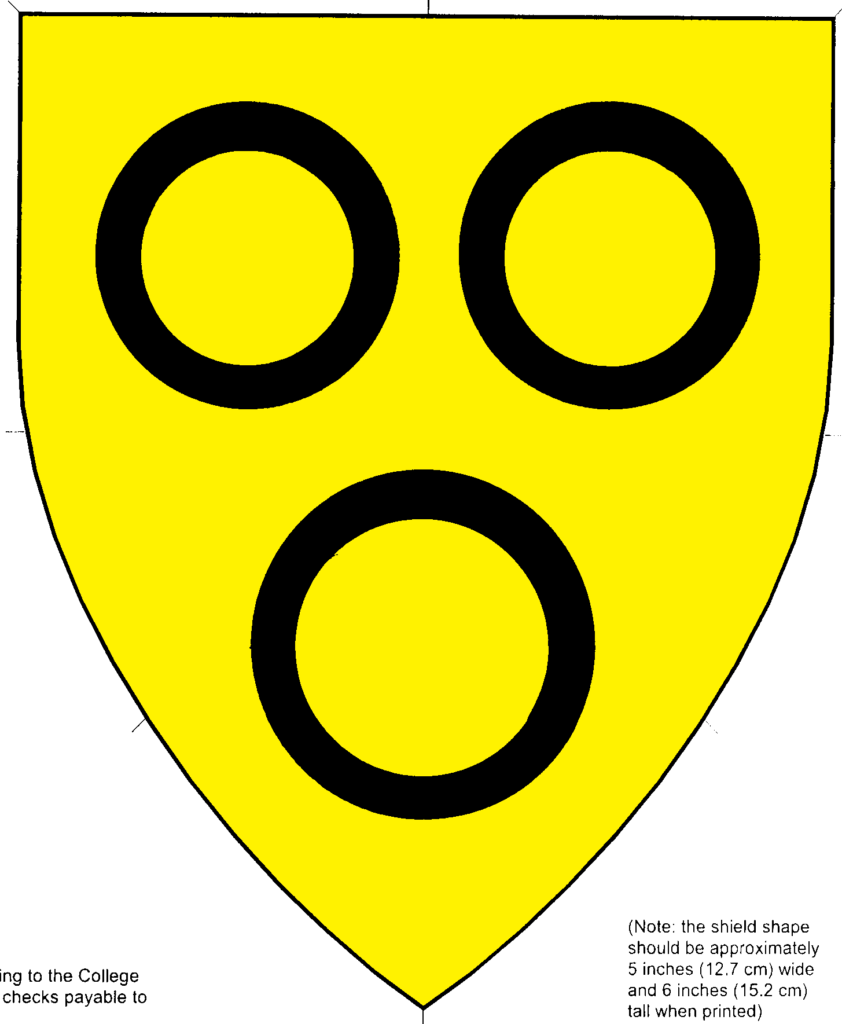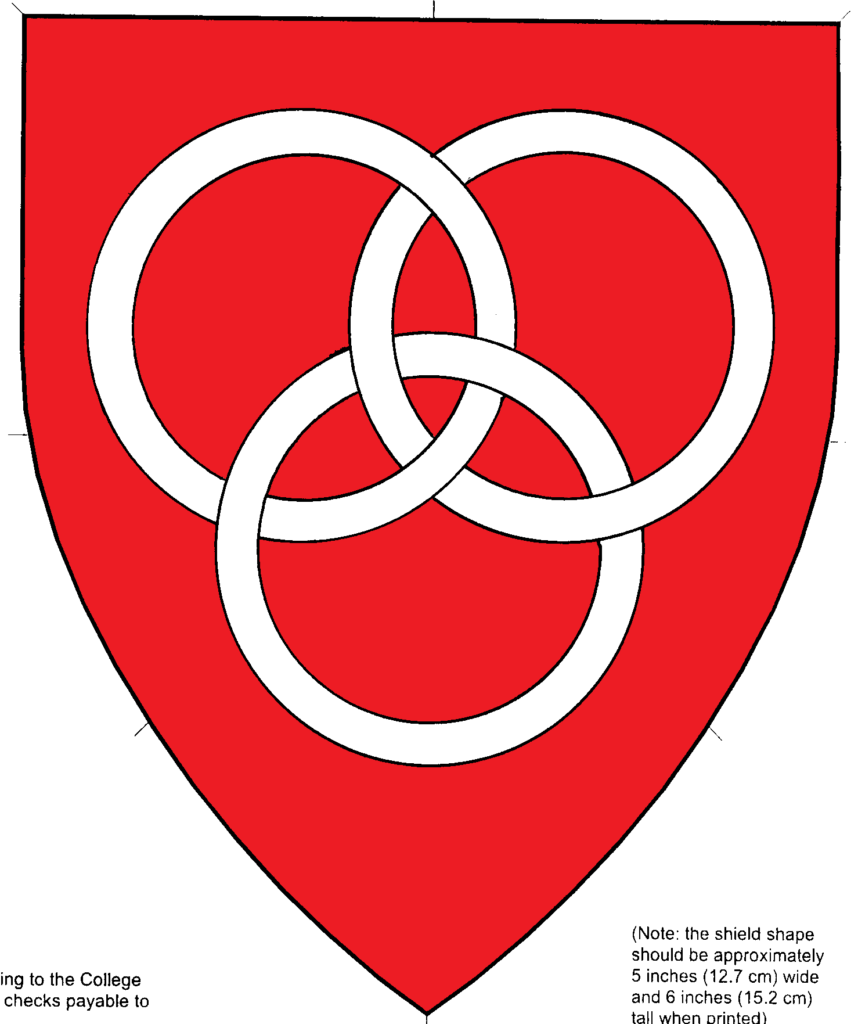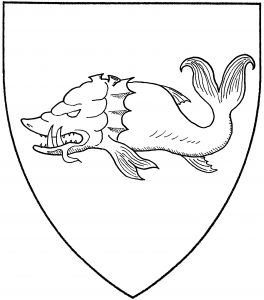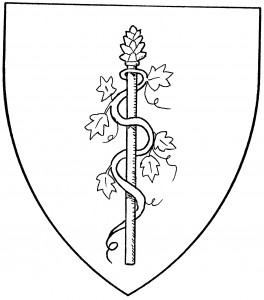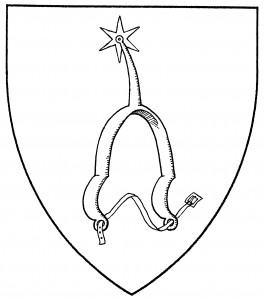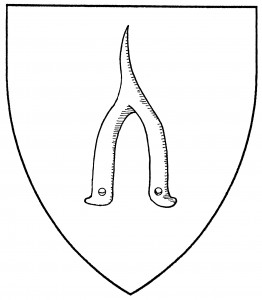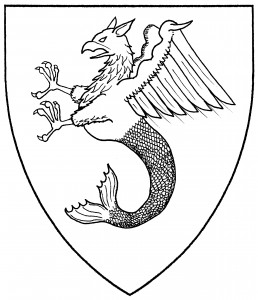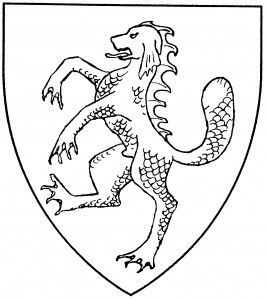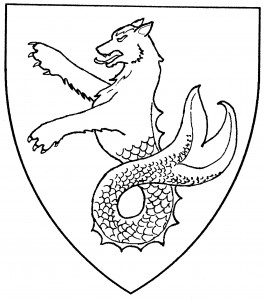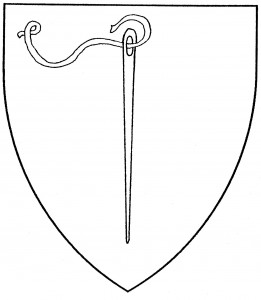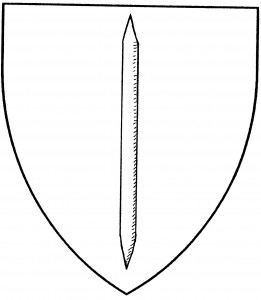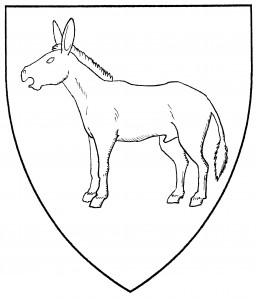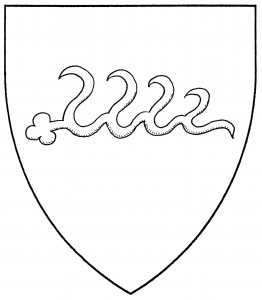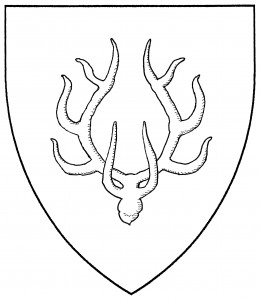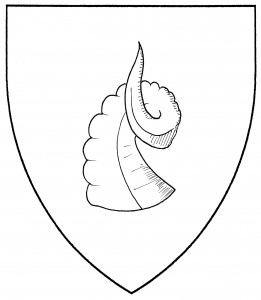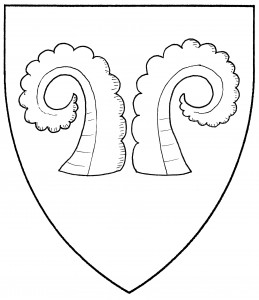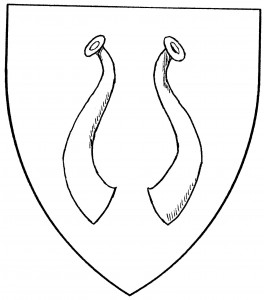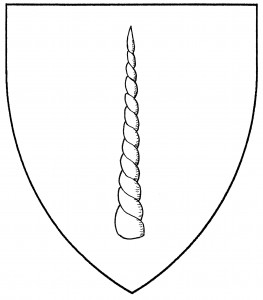The unicorn is a fierce heraldic monster, named for the single horn growing from the center of its forehead; it was the medieval archetype of purity and chastity, and its horn was considered an antidote to poison. As an heraldic charge, it’s found as early as c.1340, in the arms of Tengen [Zurich 72].
The unicorn is always shown with its forward-pointing horn, which is its defining characteristic; it’s also drawn with cloven hooves. The usual English depiction gives it a body much like a horse’s, but with a bearded chin, a lion’s tail, and tufts at its feet (and frequently higher on the legs). The Continental depiction is based more on a goat, frequently with a goat’s tail (though a lion’s tail is common), and often no tufts or beard. The exact variant is not distinguished in blazon: either form is acceptable in the Society. Both forms are rampant by default, as in the illustration.
Modern fantasy art often depicts the unicorn as a horned horse, with long sweeping mane and tail; this is not the medieval concept of the unicorn, and so-called “unicornate horses” are no longer permitted in Society armory.
The March of the Unicorn bears: Gyronny of sixteen azure and argent, a unicorn rampant and in chief a laurel wreath Or.
Charles Edward Alexander Everman bears: Ermine, a unicorn rampant sable, armed and crined gules.
Henry Clarence bears: Argent, three unicorns passant azure.
Duncan MacDougall of Mendersham bears: Or, a unicorn rampant gules.
